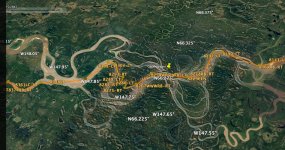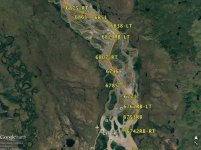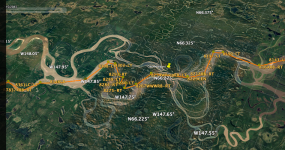- Joined
- Aug 10, 2018
- Messages
- 2,086
- Reaction score
- 6,937
I used Paddle Planner to help with my first BWCA trip but mostly for campsite reviews, portage descriptions and pictures so I'd have a little better idea of what to expect. I wasn't a subscriber then so I couldn't build routes or save them. It would show approximate travel time between 2 locations with estimated paddling time and portaging times but, having little experience back then, I didn't pay much attention to those estimates.
Now, planning a Wabakimi trip next summer, I've subscribed so I can build & save routes but I'm not sure how accurate the app is. I believe that the route I'm considering can be done in 3 weeks but Paddle Planner puts it at 13 days! (I even set it so it would take 3 days to go from the rail line to Savant lake and the more heavily traveled areas).
I input my BWCA route from 3 years ago and checked the time stamps on the photos to compare estimated vs actual paddling times and I seemed to move slowly; typically reaching my destination in about 1/2 again PP's estimated time.
I think I've gotten more efficient at portaging so I'm leaning toward trying the route as planned but allowing for 3 weeks instead of their estimated two (I know some of the portages will be tough and there's always weather delays) but has anyone else compared Paddle Planner's estimates to actual trip time? I've noticed that, when I hit the 3rd week, the planner switched from double portaging to triple (which I won't need to do) but it's still saying 13 days!
Doesn't seem reasonable to me but your thoughts are appreciated.
Now, planning a Wabakimi trip next summer, I've subscribed so I can build & save routes but I'm not sure how accurate the app is. I believe that the route I'm considering can be done in 3 weeks but Paddle Planner puts it at 13 days! (I even set it so it would take 3 days to go from the rail line to Savant lake and the more heavily traveled areas).
I input my BWCA route from 3 years ago and checked the time stamps on the photos to compare estimated vs actual paddling times and I seemed to move slowly; typically reaching my destination in about 1/2 again PP's estimated time.
I think I've gotten more efficient at portaging so I'm leaning toward trying the route as planned but allowing for 3 weeks instead of their estimated two (I know some of the portages will be tough and there's always weather delays) but has anyone else compared Paddle Planner's estimates to actual trip time? I've noticed that, when I hit the 3rd week, the planner switched from double portaging to triple (which I won't need to do) but it's still saying 13 days!
Doesn't seem reasonable to me but your thoughts are appreciated.



